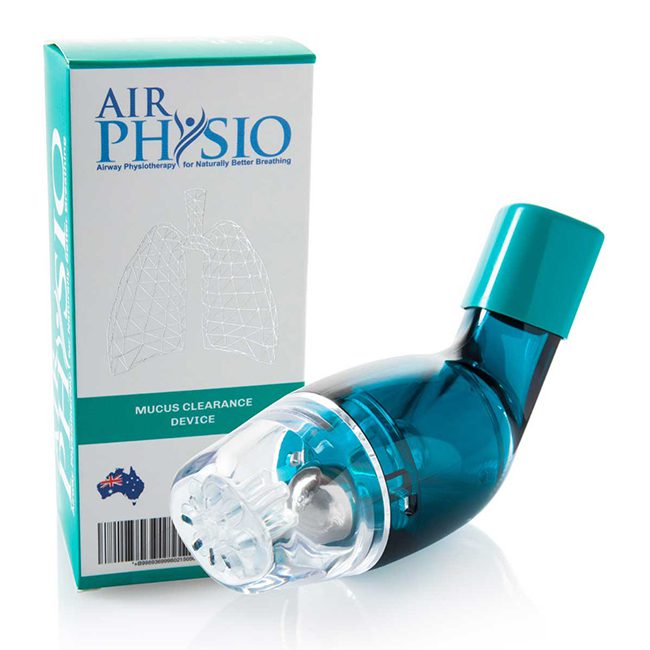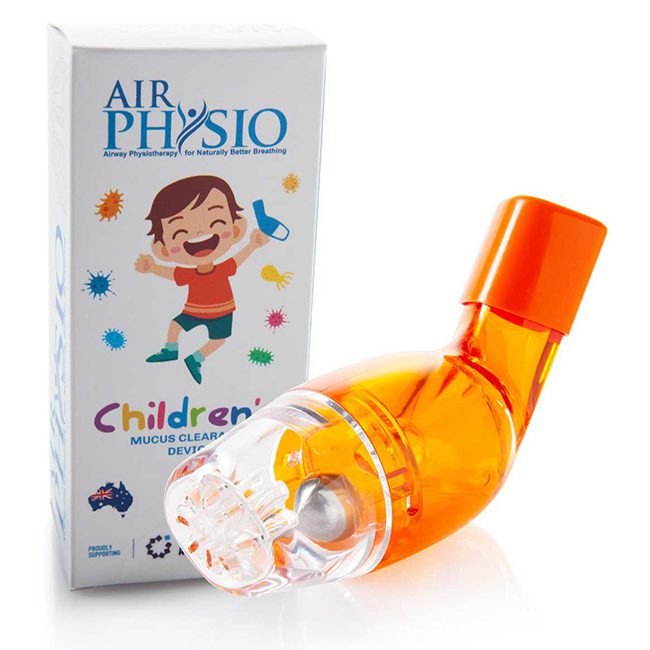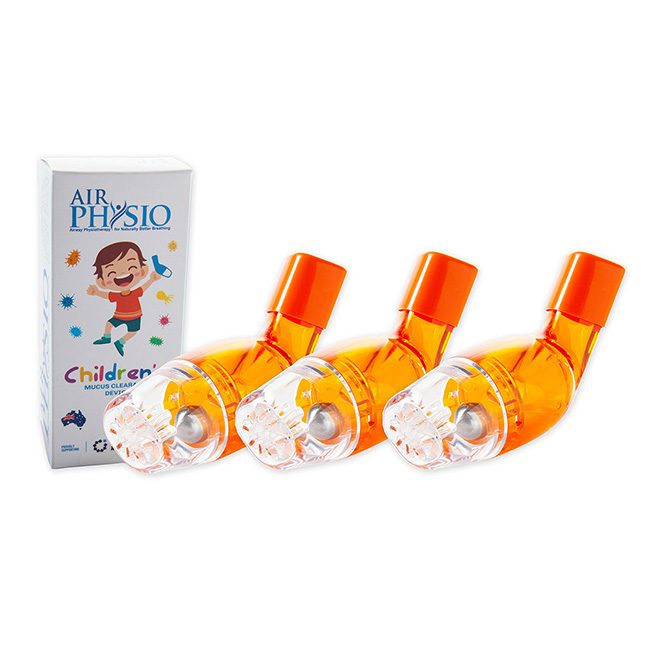
Shipping Info
Free shipping on all orders in Australia and the United States.

AirPhysio User Guide
We recommend studying the User’s Guide for detailed instructions, product description, maintenance requirements and cautions & warnings before use.
1. How to use the AirPhysio device
1. Take a deep breathe (abdominal breath) into your lungs and fill them completely
2. Hold your breathe for 2 to 3 seconds,
3. Place the AirPhysio device into your mouth and exhale through the device at a reasonably fast, but consistent pace for between 3-5 seconds until you empty your lungs. i.e. don’t try and blow too hard too quickly as this may cause you to over exert your lung muscles and leaving you feeling tight in the chest, so take it easy and don’t push too hard.
4. Most people can get it oscillating without too much exertion, but some people struggle to start with. But once your lungs are at optimal lung capacity, you should be able to lift the ball bearing slightly off the cone and have it oscillating.
5. Adjust the device to have the cap facing the ceiling and tilt it until you feel maximum vibrations within your chest, try to keep cheeks stiff to help amplify the affect in your chest.
6. After exhaling through the device, you may feel mucus accumulating near the top of your lungs or at the back of your throat, if so, initiate a cough to expel the mucus. If not, the mucus will continue working up to the throat and maybe swallowed as a normal process.
7. Repeat steps 1 through 6 for approx. 2 times per minute for up to 5 minutes, taking two deep breaths in between each session to reduce the chance of feeling lightheaded.
Note: You can use AirPhysio after taking aerosol medication to improve the distribution and effectiveness of the medication. Breathing Exercise for Healthy Individuals Do the following steps before initiation of exercise or training.
1. Relax and assume proper posture and position.
2. Slowly inhale beyond a normal breath, but do not fill the lungs completely.
3. Hold breath for 2 to 3 seconds.
4. Place AirPhysio in mouth, exhale through AirPhysio at a reasonably fast but not too forceful speed, using abdominal breathing. Do not empty the lungs completely.
5. Adjust tilt to feel maximum vibrations within the chest and keep cheeks stiff.
6. Repeat steps 2 through 4 for 5 to 10 breaths.
Caution: This exercise may make you feel lightheaded. This is normal due to the amount of carbon dioxide being exhaled. When you feel lightheaded, take a break and breathe normally until the lightheaded feeling passes. If you try to overexert and push yourself too far, there is a chance that you may pass out and lose consciousness. Note: Clean AirPhysio after each therapy session and store in a clean, dry location.
2. Parts & Accessories
AirPhysio consists of the following parts and accessories:
- Circular cone
- Stainless steel ball
- Child-resistant protective cover
- Mouthpiece and base
- Mouthpiece cap
AirPhysio is available in different steel ball sizes that allow individualized treatment according to age and tolerance of the consumer to airway resistance.
Small-sized steel ball provides less expiratory resistance and is ideal for children, as well as adults with low lung capacity, severe respiratory conditions or weak respiratory muscles (i.e. elderly and spinal cord injury patients).
Regular-sized steel ball is best for healthy, active individuals and adults with mild to moderate respiratory conditions.
3. How to Unlock the Child-Resistant Clear Top Cap
1. Grasp the clear cap with one hand and the body with the other hand
2. Twist the cap 0.3” anti-clockwise (note: the cap may be stiff when twisting, (as to deter children from opening the device)
3. Lift the clear cap from the body of the device and disassemble for cleaning
4. Pull clear cap away from blue body

4. How to clean the AirPhysio device
There are 2 ways to clean your device- A) Assembled or B) Disassembled.
Cleaning your device is good for hygiene and the prevention of spreading bacteria and germs. Most people find it necessary to clean the device after each session to remove moisture and/or mucus from the internal components.
A) Assembled
1. Wash in a solution of water with mild soap or disinfectant solution
2. Rinse and allow to air dry and/or shake to assist removing excess water
3. Place in a drying tray with the mouthpiece facing down to allow water to
drain away and dry
4. Allow the device to dry in the open at room temperature
B) Disassembled
1. Disassemble the device as per the above instructions ‘How to unlock
the child resistant clear top cap’
2. Wash in a solution of water with mild soap or disinfectant solution
3. Rinse and allow all the components to dry in the open at room temperature
4. Reassemble device & store in a clean, dry location
Warning: Chlorine bleach or other products containing chlorine (eg dishwashing detergent) should not be used for cleaning the device
Return and Refund Policy
RespiWise offers a 20 day satisfaction guarantee on the quality of the products. If you are not happy with the products, you have 20 days to notify RespiWise and to ship the product back to our company for a full refund of the product. Once the 20 days has ceased, then there will be no option for return and refund.
- An international award-winning mucus clearance and lung expansion medical device.
- Helps treat various respiratory complications.
- Removes mucus fromthe lungs while helping to maintain maximum lung capacity.
- Fewer cases of fever and reduced length of hospital stay in thoracic and upper abdominal postoperative adult patients.
- Significantly increases bronchodilators effect when used concomitantly.
- Self-administered and easy to use.
- Recommended by guidelines.

Respiratory conditions can be life threatening
- Respiratory diseases are associated with excess mortality, reducedquality of life for patients, and high health-care costs
- In 2019, approximately 8372 people with respiratory diseases died, compared to 6129 in 2010
- Respiratory diseases represented the 5th leading cause of death in Australia, according to the Australian Bureau of Statistics
According to the World Health Organisation (WHO), asthma and chronic obstructive pulmonary disease (COPD) are among the most common respiratory diseases affecting people worldwide








